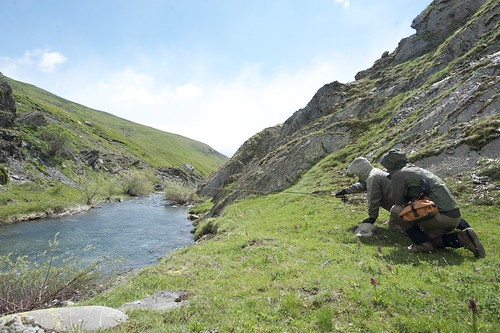IvyThicket
Senior Member
Thanks for the input , I was,wearing brown waders n camo jacket . Don't understand how the fish can see me if I'm behind them by at least 10 ft , and they face upstream
Trout can see rather well behind themselves believe it or not. They have what is known as a 'Cone of Vision'. Look it up one day. The cone refers to the position of a trout's eyes and how it allows them so see horizontally under water and vertically above water. They can see nearly all the way around themselves under water (330 degrees if I'm not mistaken) so if your feet are in the water and you are not standing directly in a line behind their tail, they probably know you're there. They can also see at roughly 100 degrees vertically above them. This is where it can get a little weird but neat nonetheless. Snell's Law tells us how light is reflected and refracted at different angles as it hits the water. Because of this, it allows them an additional 60 degrees of sight above the water, to roughly 160 degrees overall. I studied this crap for a college course once. The more you know!
Anyway, how does this help you? I have found that I almost always try to keep my feet out of the water where applicable. If it isn't possible, I try to stand behind a rock or structure that is in the water, but between me and the fish. Remember, if your feet is anywhere in the water, they can most likely see them and what they can't see they can sense via their lateral line. As to what they can see outside of the water, from the waters surface to 10 degrees above, they can't. At that angle all they can see is a reflection of the bed of the stream, unless again, you have some part of you visible under water. For you to stay in that 10 degree angle, you'd have to distance yourself quite a bit or shrink your silhouette in some fashion. This is why you'll see a lot of fly fisherman squatting near the rivers edge and such to make a cast.
There are plenty of illustrations you can find online if this doesn't make sense.
Good luck!

Last edited:
